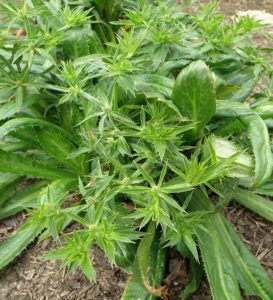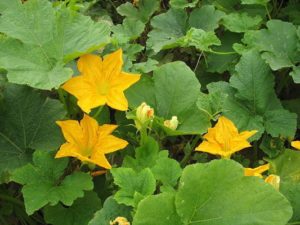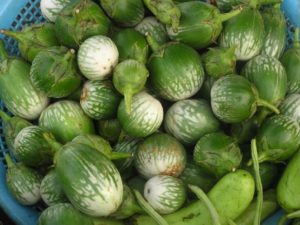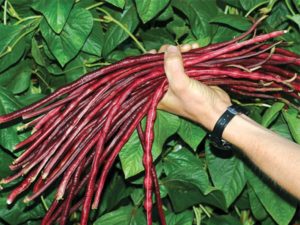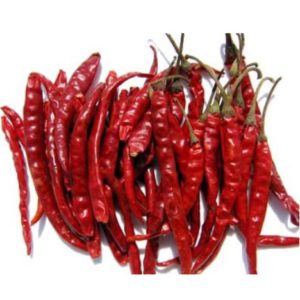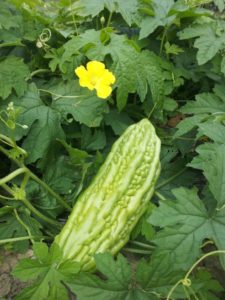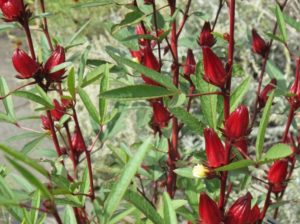by Maggie Fitzpatrick
For parts of our community, particularly newly arrived refugees and immigrants, gardens can be an important source of cultural expression and food for the home. Having diverse and welcoming gardens can be an opportunity for all to thrive. It allows for opportunities to learn unique growing skills and new perspectives on gardening.
Whether people are newly arrived or had immigrant relatives generations ago, growing information is often handed down through generations. From working with Bhutanese and Burmese individuals I learned about growing cucurbits through what we termed “shelf gardening.” In other terms using a trellis, like an arbor, allowing for the plant foliage to grow and for the melon, gourd or squash fruit to hang down. This was done with Asian varieties including bottle gourd and bitter melon. Try this with delicata or acorn squash, nothing too heavy.
Living in our commercial milieu, gardeners in the US often think they have to buy something to solve a garden issue. The perspective on garden supplies is much different for refugee and immigrant farmers. For trellises, I’ve seen community gardeners scour for large fallen branches. The results of pole beans growing up and winding around the branches is beautiful and free!
Working with a diverse set of gardeners also give the opportunity to learn about other cultures. If you can engage with your fellow gardeners, you can learn about different crop varieties that are particular to other regions of the world. Thai eggplant, Asian long beans, Thai chili peppers, okra, bitter melon and the list goes on. By communicating with the people that know these veggies best, you learn how to prepare and cook these special veggies.
Here are some tips for working with a refugee and/or language-learning community:
- Have picture-based signage. Put as many garden rules into clear graphic signage so that no matter your language or literacy level you can discern the message. If you can, interpret and demonstrate the rule to the group so that the meaning is solidified.
- Seek interpretation when available. If there is a language barrier, try to find a family member or a community leader to help with communication. Communication is key to good relationships between gardeners.
- Navigate cultural differences and misunderstandings. Cultural differences will arise, however the benefits are well worth negotiating these issues. Common misunderstanding can be over perceptions of neatness in the garden, plot boundaries and ownership of produce.
- Provide information and learning for all levels and styles. Individuals have varying levels of experience and success with formal, classroom-based education. Some may have no experience. Remember there are many approaches to learning. Materials and sessions that are text and graph heavy can be difficult for some. Consider storytelling, role-play vignettes, and demonstration as techniques to use in addition to plain language handouts to send home.
- Make space for empowerment and sharing knowledge. Many people have rich backgrounds farming in their homelands. With pre-set garden rules and typical “ways of doing things” much of the information can seem one-directional. Adults are most engaged and learn best when they can share and draw upon experience. Make space for this sharing to happen, and invite leadership from any cultural communities involved in the garden.
One great resources for working with refugee and immigrants as farmers and community gardeners: ISED Solutions (2017). Teaching Handbook Refugee Farmer Training. Happy garden planning!
Maggie Fitzpatrick is the Agriculture and Natural Resources Educator at Cuyahoga County Extension
